Try Default

See how revenue teams automate revenue operations with Default.

Key Takeaways
- Your SaaS sales model sets both your GTM motion and your growth ceiling. The right fit depends on ACV, buyer complexity, and sales velocity.
- Each model—self-service, transactional, solution, or hybrid—carries trade-offs. Success comes from aligning CAC tolerance, control of touchpoints, and scalability.
- High-performing teams execute with precision through automated routing, CRM-driven workflows, and persona-based outreach.
- Metrics like CAC, LTV, lead velocity, and churn aren’t just scorecards—they’re levers to optimize in real time with platforms like Default.
Your sales model sets the pace of your growth. It determines how customers discover, evaluate, and buy—and how much it costs you to win them. Get it right, and revenue compounds. Get it wrong, and you’re stuck with rising CAC, long payback periods, and frustrated sales teams.
The difference shows up in the numbers. Enterprise SaaS companies often face CAC payback of 18–30 months, while lean product-led growth (PLG) companies can recoup costs in under 12 months if activation flows convert. Sales velocity varies just as widely: simple PLG motions move quickly, while enterprise deals stretch into months.
That’s why your sales model isn’t just an operational choice—it’s one of the most leveraged growth decisions you’ll make.
The strongest SaaS companies don’t simply pick a model; they operationalize it with clear segmentation, automation, and real-time visibility.
In this guide, you’ll see how the four dominant sales models—self-service, transactional, solution, and hybrid—work in practice, the trade-offs they carry, and the strategies and metrics that separate teams who scale efficiently from those who stall.
Why your SaaS sales model defines your growth ceiling
Your sales model determines how leads are engaged, how buyers move through the funnel, and what your GTM engine must support. When model and execution don’t align, costs rise and efficiency collapses.
The numbers make it clear. High-ACV enterprise deals require 2–3× higher CAC than SMB motions, while self-service models typically cut CAC by 30–50%. Healthy sales teams see 70–80% of reps hitting quota—but when fewer than half do, it’s usually a sign of misrouted leads or weak enablement. On top of that, pipeline leakage—the silent drop-off of prospects between stages—undermines forecasting accuracy and wastes revenue potential.
That’s why understanding the trade-offs between the four dominant SaaS sales models—self-service, transactional, solution, and hybrid—is critical.
Each one carries different costs, risks, and growth opportunities, which we’ll break down next.
Common SaaS sales models and trade-offs
No single playbook fits every SaaS business. The right model depends on ACV, product complexity, and sales cycle length. Below are the four most common motions—self-service, transactional, solution, and hybrid—along with trade-offs, benchmarks, and how Default helps operationalize each.
Model #1: self-service sales model
A low-touch, product-led motion where users sign up, onboard, and convert without sales involvement. Success depends entirely on user experience, onboarding clarity, and delivering fast time-to-value. It’s the dominant model for freemium or low-ACV SaaS with a wide top-of-funnel.
Pros
- Lowest CAC profile — PLG companies often see CAC payback in under 6 months.
- Scales efficiently with product-qualified leads (PQLs) and viral adoption loops.
- Faster activation drives early retention — first-week engagement correlates to 2–3x higher LTV.
Cons
- Limited sales control — no reps means no tailored objection handling or upsell guidance.
- High churn risk if onboarding flows break; PLG churn averages 10–15% annually.
- LTV ceiling unless paired with sales-assisted expansion.
Use case
Best for tools with instant, visible value and intuitive onboarding (e.g., Calendly, Notion, Loom). Works when user adoption can scale faster than sales headcount. To extend growth beyond initial cohorts, RevOps teams often enrich inbound signups and surface high-intent PQLs for sales-assisted expansion—something platforms like Default can automate.
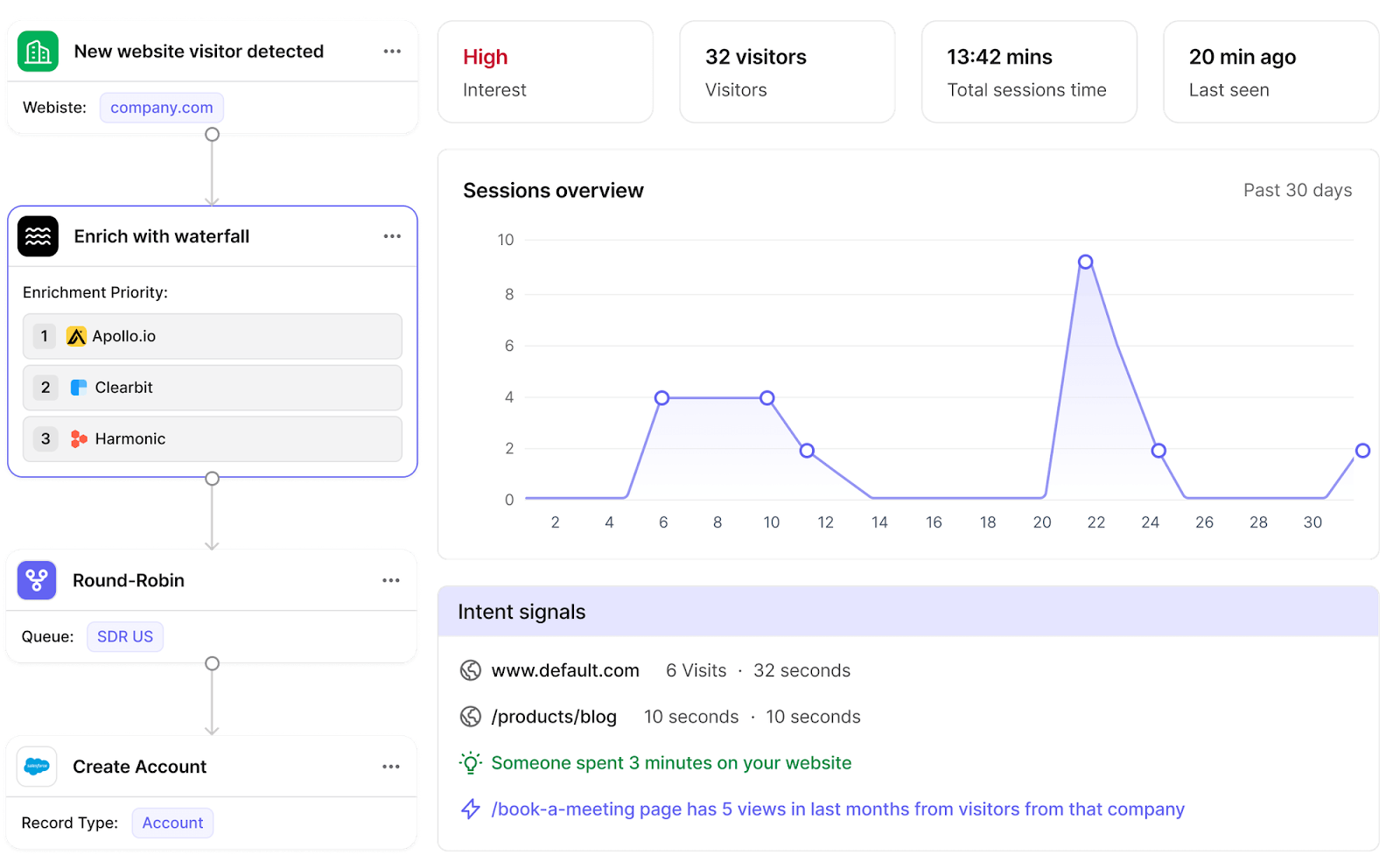
Model #2: transactional sales model
A mid-touch motion where SDRs or AEs engage inbound leads with short to mid-length cycles. Built for moderate-ACV products that need demos or qualification but don’t justify heavy enterprise overhead. Efficiency hinges on routing accuracy and rep responsiveness.
Pros
- Human touch improves conversion — transactional motions close at 20–30% higher rates than pure PLG.
- Optimized for inbound-heavy funnels with SDR/AE pairing.
- Lower CAC than enterprise sales while still enabling upsells and cross-sells.
Cons
- Lead waste risk if routing logic or SLAs aren’t enforced; up to 40% of MQLs stall without automation.
- Rep productivity drops without enrichment, deduplication, or scoring automation.
- Funnel leakage common without visibility into touchpoint performance.
Use case
Ideal for SaaS with $1K–$15K ACV and scalable onboarding (e.g., HubSpot, Asana, Monday.com). Works best when bridging PLG and sales-assisted growth. For RevOps leaders, the challenge is keeping routing clean and SLAs tight. Platforms like Default can support this by routing leads in real time by persona and segment while enforcing SLA compliance to reduce leakage.
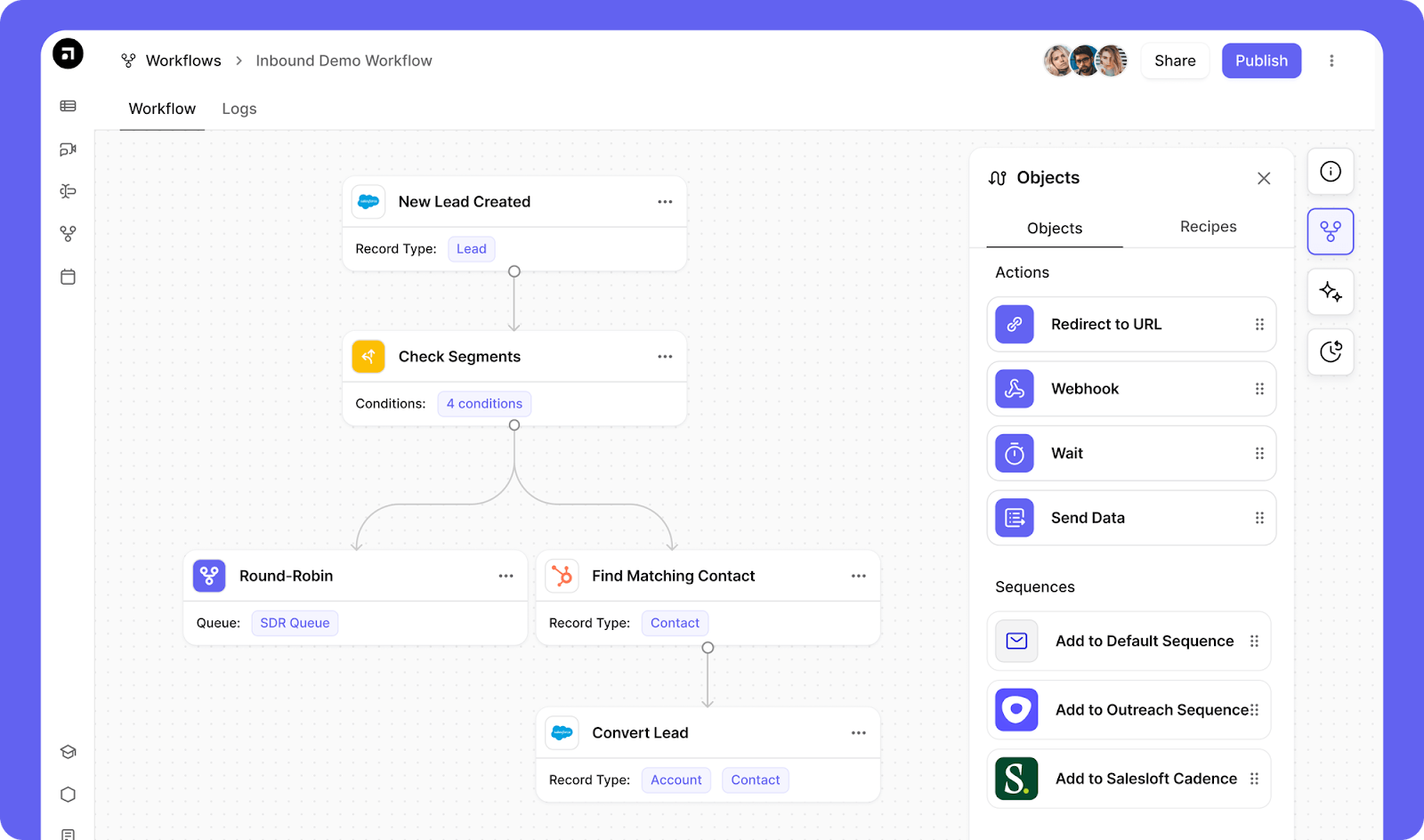
Model #3: solution sales model
A high-touch model for large, complex deals with long cycles and high ACV. Relies on consultative selling, multi-threading, and deep pre-close engagement.
Pros
- Enables tailored positioning across economic, technical, and operational buyers.
- Multi-threading improves win rates — enterprise deals with 6+ stakeholders close at 2.5x higher rates than single-threaded ones.
- Drives higher ACV and reduces discounting through value-based selling.
Cons
- High CAC — enterprise SaaS averages 15–24 month payback.
- Long rep ramp time without structured playbooks.
- Cross-functional friction if sales, marketing, and CS lack shared visibility.
Use case
Best for enterprise SaaS with >$25K ACV, involving integrations, security reviews, or legal workflows (e.g., Salesforce, Workday, Snowflake). Execution requires precise coordination across functions. Platforms like Default can help by syncing workflows across sales, marketing, and CS to maintain momentum through long cycles.
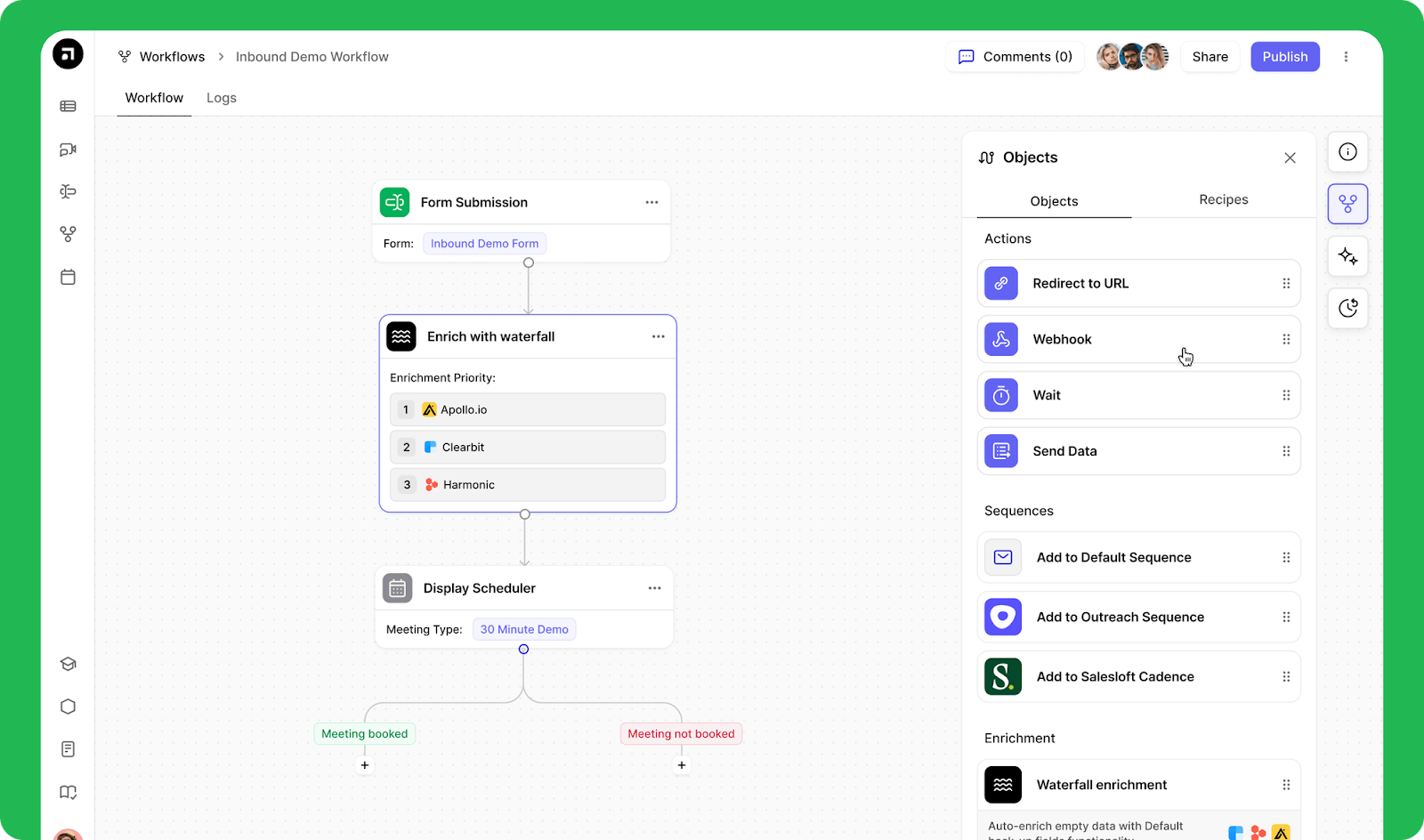
Model #4: hybrid sales model
Combines self-service, transactional, and solution motions under one GTM framework. Designed for SaaS companies serving multiple customer segments and ACV ranges.
Pros
- Maximizes revenue coverage across segments, from SMB to enterprise.
- Flexibility to run low-touch PLG motions for long-tail users while supporting enterprise cycles.
- Supports land-and-expand by blending product-led onboarding with sales-assisted upsells.
Cons
- Complex to operationalize — requires strict routing rules, ownership clarity, and reporting.
- Channel conflict risk without aligned incentives.
- Higher operational overhead due to motion-specific workflows.
Use case
Best for SaaS orgs with multi-tier pricing and mixed GTM motions (e.g., Zoom, Miro, Dropbox). Common in companies scaling across SMB and enterprise without separate teams. RevOps leaders often lean on platforms like Default to manage dynamic routing rules and prevent territory or ownership conflicts.
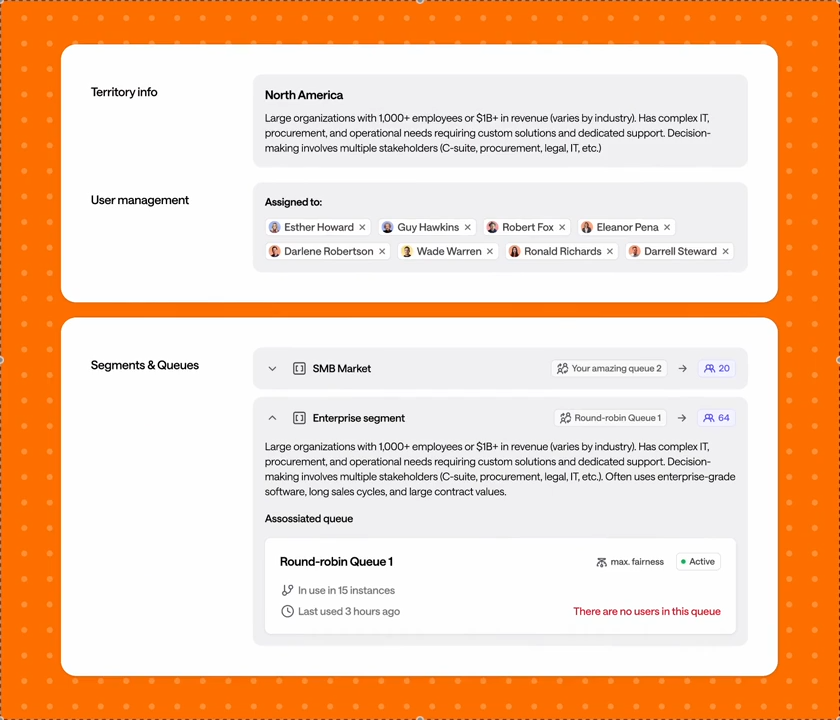
Strategies to accelerate SaaS sales velocity
Your sales model sets the framework. What drives repeatable revenue is execution—how consistently you move leads through the funnel without friction. These strategies help SaaS GTM teams accelerate cycles, reduce CAC, and improve conversion rates.
Strategy #1: automate lead routing and qualification
Speed-to-lead is one of the most actionable levers in conversion optimization. A Harvard Business Review study found that companies responding within an hour are seven times more likely to qualify leads compared to slower responders.
Top-performing GTM teams automate routing using persona, firmographic, and behavioral filters to reduce delays. Rather than relying on manual handoffs, platforms like Default offer scalable SLA enforcement to ensure every lead immediately lands with the right rep.
Strategy #2: integrate sales and marketing workflows
Pipeline leakage often starts at handoff points. In LeanData’s 2022 State of B2B Lead Management report, 67% of respondents said leads were routed to the wrong owners, highlighting the handoff vulnerabilities that derail deals.
High-performing teams mitigate this risk with defined ownership rules, automation, and real-time visibility. For RevOps professionals, tools like Default help by translating campaign signals into routing logic and automating handoff workflows, ensuring every lead stays active until conversion.
Strategy #3: personalize outreach at scale
Generic messaging doesn’t move pipelines. For B2B outreach, tailored web experiences alone can deliver an 80% lift in conversions.
Top-performing teams embed personalization cues into campaigns—like industry references, role-specific positioning, and usage signals. Tools like Default can auto-populate these details into sales sequences, helping reps scale outreach without sounding generic.
Strategy #4: tighten sales velocity monitoring
Sales velocity—the pace at which pipeline converts to revenue—is a powerful health indicator. It captures pipeline volume, deal size, win rate, and cycle length in one metric.
Great RevOps teams break this down by team, region, or motion to pinpoint slowdowns before they become leaks. Default can automate these calculations and flag slipping velocity, giving teams time to course-correct.
Strategy #5: operationalize expansion and multi-threading
According to SaaSCan’s 2025 B2B SaaS Metric Benchmarks, expansion ARR contributed 40% of total new ARR in FY‑24, up 5 percentage points from the previous year. In companies with more than $50 million ARR, expansion actually made up over 50% of new ARR
Top-performing SaaS teams don’t treat expansion as an afterthought—they build automated signals and workflows to capitalize on it. RevOps platforms like Default can help detect usage spikes, upsell potential, or account growth signals, then trigger tailored outreach to maximize account value.
Across every strategy—from automating lead routing to systematizing expansion—the playbook is the same: translate repeatable revenue principles into systems. GTM leaders don’t settle for best practices; they embed them. With Default’s automation, visibility, and real-time logic, they ensure nothing slips—pipeline stays tight, velocity stays high, and growth stays scalable.
The SaaS sales metrics that matter most
The best GTM teams don’t treat metrics as passive dashboards—they use them as levers to tighten spend, protect pipeline, and extend revenue durability. Four metrics matter most.
Metric #1: customer acquisition cost (CAC)
CAC shows how efficiently you’re winning new customers. If the data is messy, every dollar of analysis is suspect.
Default keeps lead and campaign data clean—deduped, enriched, and preserved through routing—so CAC reporting in your CRM or BI reflects reality. That makes it easier to spot inefficiencies and redirect budget before wasted spend compounds.
Metric #2: lead velocity rate (LVR)
LVR tells you if qualified pipeline is growing fast enough to support future revenue. It’s a leading indicator, not a lagging one.
Default enforces routing rules and SLA adherence in real time, and flags when responsiveness slips. That operational visibility helps teams protect velocity before it drops.
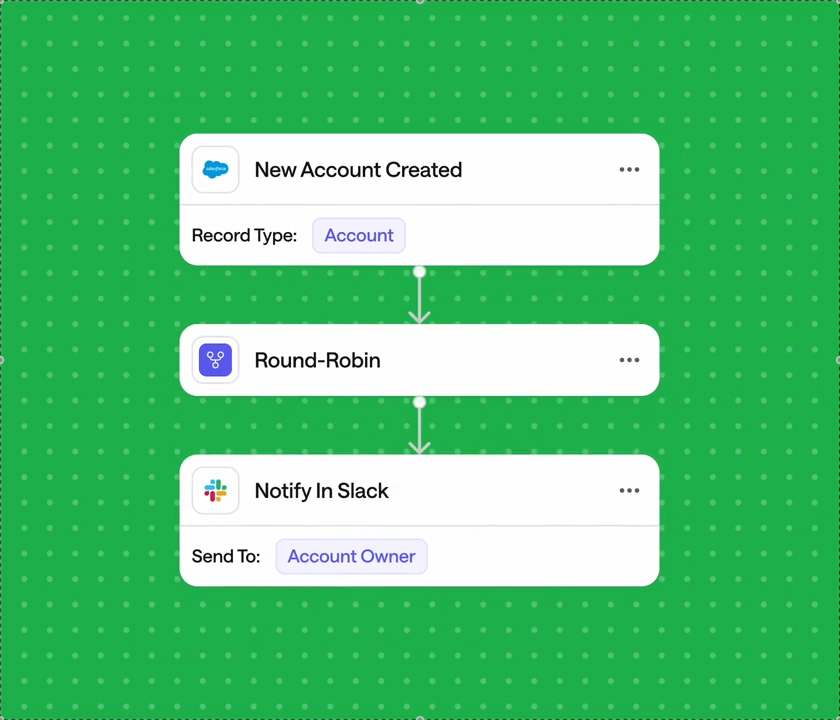
Metric #3: customer lifetime value (CLV)
CLV reflects the payoff of your acquisition and expansion efforts. Strong ratios point to healthy onboarding, retention, and upsell execution.
Default maintains clean account and lifecycle data, while automating expansion and renewal workflows. This ensures your CLV models are built on reliable inputs—and your teams can act on the highest-value segments.
Metric #4: churn rate
Churn is recurring revenue’s slow leak. Even modest losses compound into millions in ARR over time.
Default highlights leading churn risks during renewal and expansion plays—like missed follow-ups, ownership gaps, or stalled multi-threading—and routes alerts so reps can intervene before accounts slip away.
CAC, LVR, CLV, and churn aren’t just numbers. They’re the signals that decide whether growth compounds or stalls. Default makes those signals actionable in real time—turning metrics into workflows that protect pipeline and accelerate revenue.
SaaS sales challenges and how to solve them
Even with the right model, execution gaps stall pipeline and inflate CAC. These are the most common breakdowns SaaS GTM leaders face—and how Default closes them.
Challenge #1: poor lead-to-rep routing
Leads that sit in the wrong queue or get delayed quickly lose momentum, wasting both demand spend and rep time.
With Default: Routing happens automatically by segment, territory, or persona, ensuring every lead reaches the right owner instantly. SLA tracking highlights delays so managers can step in before opportunities decay.
Challenge #2: misaligned sales and marketing handoffs
When leads are passed between disconnected tools, reps may never see them. Campaign dollars get burned, and pipeline never materializes.
With Default: Marketing and sales workflows run in one connected layer—from form fills and scoring to routing and notifications. Teams operate from the same data and rules, improving collaboration and ensuring follow-up is consistent.
Challenge #3: lack of visibility into sales execution
Traditional CRMs mostly show outcomes, not what’s happening in the funnel. Without visibility, ops teams can’t spot where deals stall until it’s too late.
With Default: Every stage of the buyer journey is tracked, from first touch to close. Ops can see gaps in activity, follow-ups, or SLA compliance in real time, and intervene before pipeline dries up.
Challenge #4: churn from missed follow-ups
High-potential leads often slip away not because of fit, but because they were never engaged at the right time. In hybrid motions, mixed ownership makes this worse.
With Default: Automated reminders, task routing, and escalation flows ensure every qualified lead or account is engaged on time—reducing preventable churn and protecting long-term revenue.
Scaling SaaS sales with Default
The ceiling for SaaS growth isn’t defined by the number of leads you capture. It’s defined by how well you execute. Misrouted leads, broken handoffs, and blind spots in rep activity silently drain velocity and inflate CAC—even for companies with strong demand.
Default is built to eliminate those execution gaps.
It gives GTM teams the infrastructure to scale with precision: routing every lead to the right owner, automating handoffs across sales and marketing, and surfacing risks and opportunities in real time.
High-performing SaaS companies don’t leave these motions to chance. They systemize them. Default is the RevOps platform that makes your chosen sales model—whether PLG, transactional, enterprise, or hybrid—work at scale.
Book a demo today or see how Runway increased conversion by 10% with Default.
FAQs
How do I improve my SaaS sales cycle?
The two biggest levers are speed-to-lead and clean handoffs. Leads that sit too long or get routed to the wrong rep rarely convert. Automating routing and follow-up tasks ensures every opportunity is worked quickly and consistently.
How can I handle objections during SaaS sales?
Preparation matters more than improvisation. Equip reps with context—persona, industry, past interactions, and usage signals—so they can anticipate concerns and respond with relevance. Tools that surface this data in real time help reps keep deals moving instead of getting stuck in generic back-and-forth.
What tools can help optimize SaaS sales processes?
Point solutions can cover parts of the funnel, but the real gains come from orchestration—connecting routing, enrichment, follow-up, and reporting into one system. Platforms like Default provide that layer of coordination, so sales and marketing operate on the same playbook instead of juggling disconnected tools.
Conclusion

Former pro Olympic athlete turned growth marketer! Previously worked at Chili Piper and co-founded my own company before joining Default two years ago.
Accelerate your growth with Default.
Revamp inbound with easier routing, actionable intent, and faster scheduling















.png)


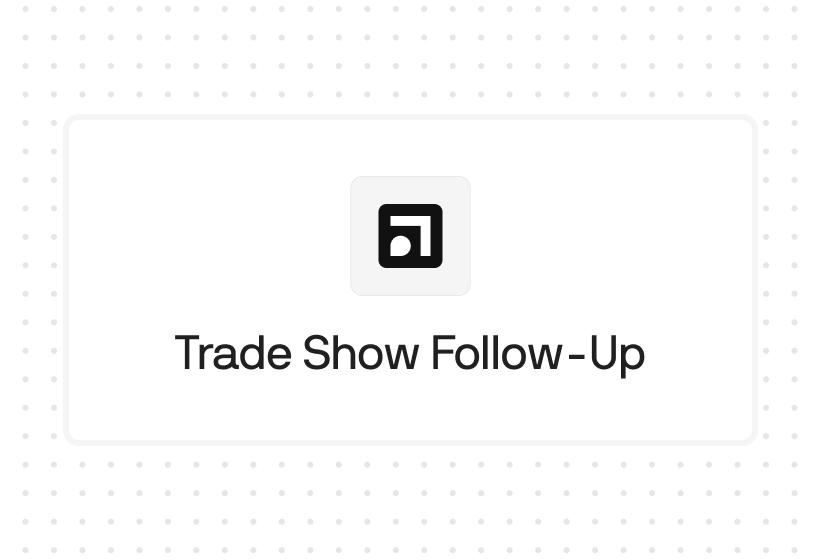
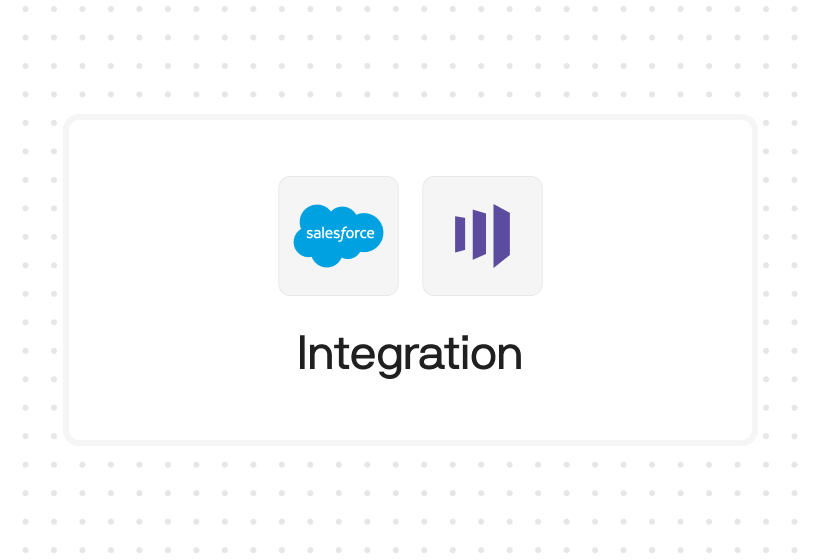




%201.svg)



.svg)





%201.svg)



%201.svg)

